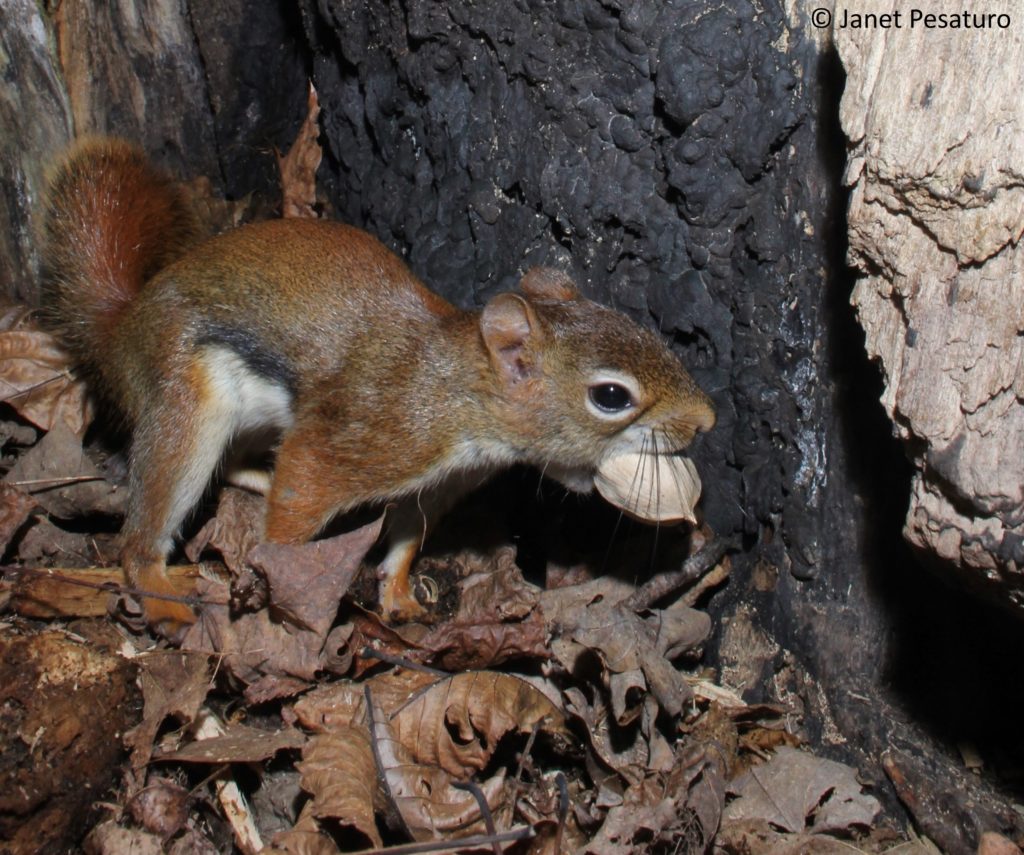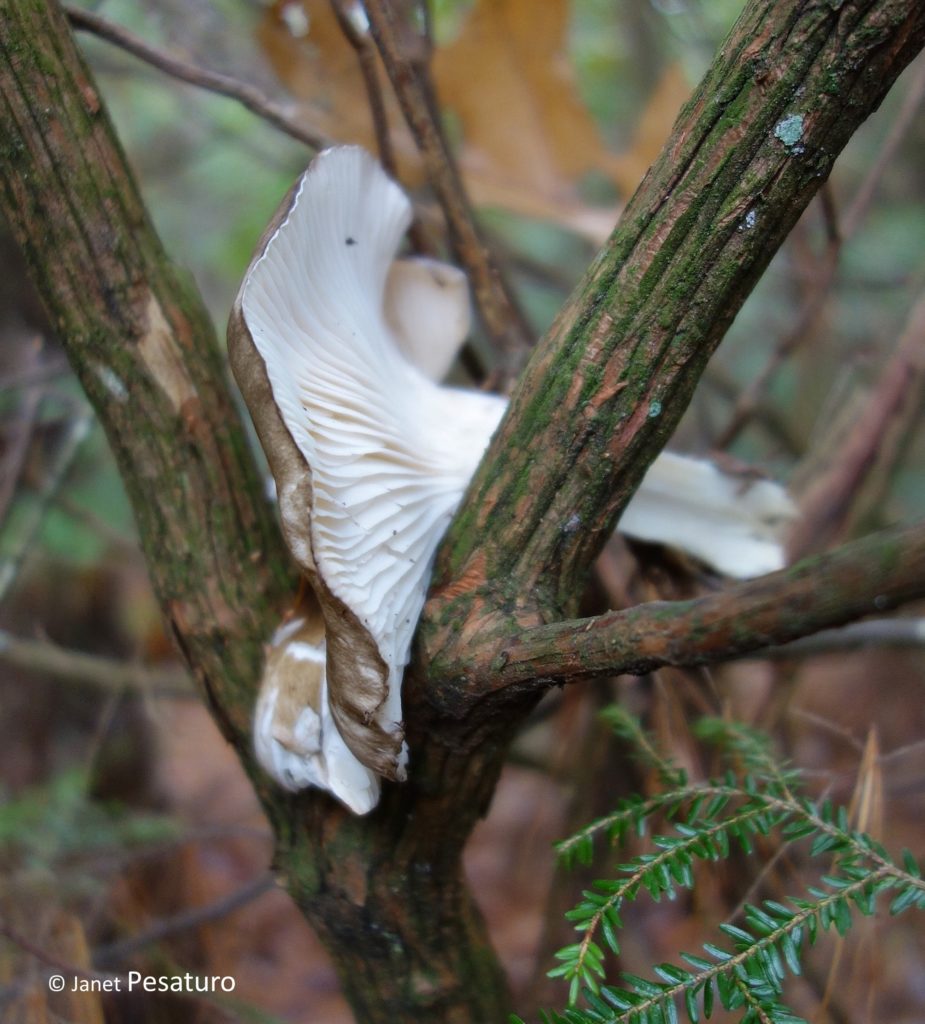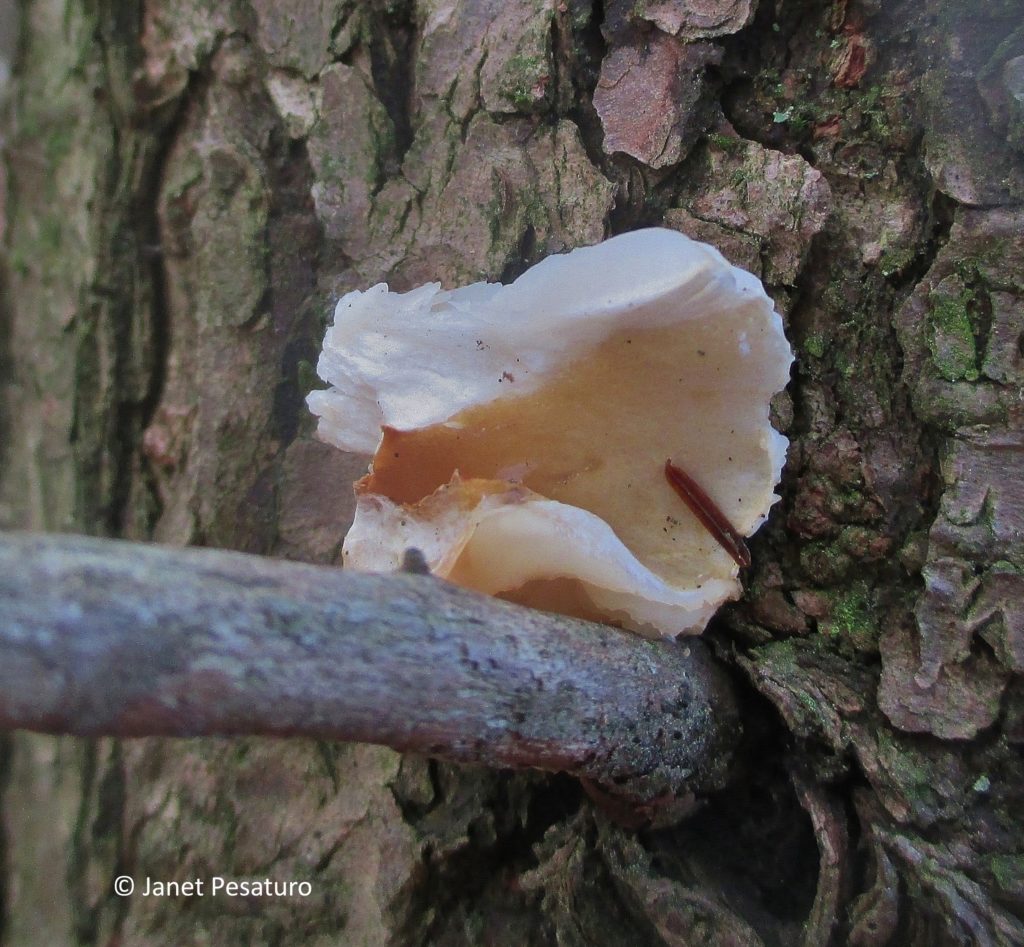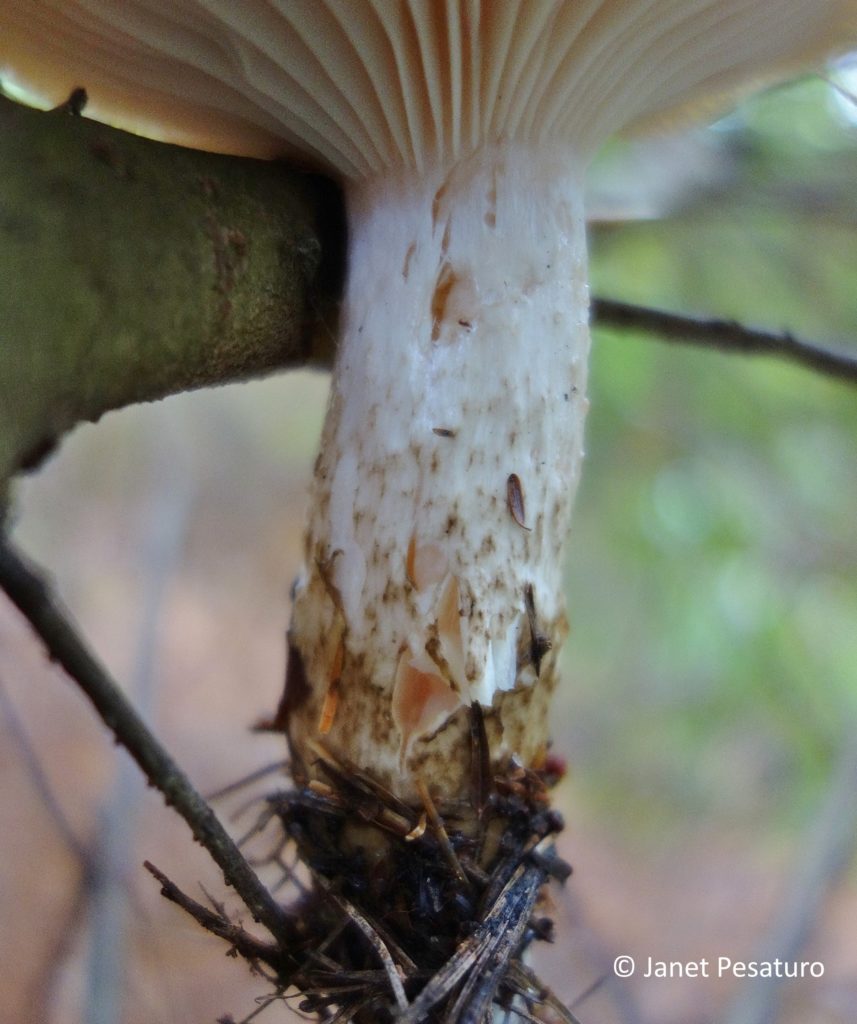Red Squirrels: Mushrooms, Moisture, Mast, and Mystery

Red squirrels are known for their fondness for conifer seeds, but where nuts abound, the animals may store and eat them in quantity. This one has a hickory nut. (Homemade camera trap: IR triggered Canon 60D with Nikon SB28 flash)
Most people associate red squirrels (Tamiasciurus hudsonicus) with conifers, and while it’s true that they need forest with at least some conifers, they are fairly adaptable omnivores and their diet tends to reflect local abundance. So in Alaska’s boreal forest, conifer seeds and mushrooms are top menu items. In southern New England, on the other hand, acorns and other nuts may be just as important as conifer seeds.
But this year in Massachusetts the acorn crop was poor, forcing squirrels to find other food sources. Mushrooms happen to be plentiful this year due to the abundant rainfall, so red squirrels are collecting them in great quantity, and the evidence is striking.
Recently my friends and I were treated to the wonders of a red squirrel fungus processing plant in a hemlock forest. While I have come across the occasional mushroom stashed on a branch, a forest lavishly trimmed in myco-decor was a new one for me. Collections of mushroom pieces littered the forest floor, and both fragments and whole mushrooms had been hung out to dry on boughs, in bark flaps, and on logs and stumps. Trees were decorated high and low with myriads of mushrooms, making a magical and merry holiday scene.

A mushroom left to dry by a red squirrel. Once dehydrated, the mushroom will be collected by the squirrel and stored in a chamber.
It appears that the animal harvests a mushroom and then decides whether to stash it intact or break it into manageable chunks before carrying them off to just the right drying rack. The dried mushrooms resist decay and can be stored long-term in cavities. So the final step for the red squirrel is to gather the dehydrated mushrooms and store them in tree hollows and other chambers.

A mushroom fragment placed for drying by a red squirrel.
How in the world do red squirrels know to dry their mushrooms before storing them? That’s the mystery, but clearly they do know how best to handle different types of foods, because they do not dry conifer cones before storage. Dry cones open and disintegrate, so the russet rodents cache them in cool, moist piles.

Notice the teeth marks near the bottom of the stalk of this mushroom. The squirrel must have carried it by the stalk, leaving these marks.
When you find a mushroom hanging out to dry, inspect it for teeth marks, which can be seen on the stalk in the above photo. Enjoy these enchanting photos of red squirrels carrying mushrooms and notice that they may tote their treasures by stalk or by cap.
Interested in rodent feeding and hoarding behavior? Check out Flying Squirrels and Hickory Nuts.
Sources and further reading
Vander Wall, S. B. Food Hoarding in Animals. Chicago and London: The University of Chicago Press, 1990.
Fogel, R. and J. M. Trappe. “Fungus Consumption (Mycophagy) by Small Animals.” Northwest Science. 52 (1978): 1-31.

Janet, Very cool about hanging out mushrooms to dry.
Do they put them in the freezer for long time storage?-)
Nice photos of red squirrels stocking their larder.
Never saw that before, I always think of red squirrels
as highly caffeinated, they move so fast!
They are speedy little beasts. And fiesty.
trying to find a video showing them doing it tho
Good luck. Maybe I’ll get one this fall.
I’m a little late to this post…
I live in the NE part of the United States and I never knew that squirrels eat mushrooms. We have common gray squirrels in our yard and mushrooms are part of their diet. It’s amazing to me that these red squirrels actually dry them! That is so cool!
I agree, it is utterly amazing. I wonder what goes through their minds as they set them to dry!
Pingback:25 Kickass Random Facts List #669 | KickassFacts.com
This is wonderful.I love Rodents and had a Fox Squirrel friend come inside through the window every day where I had food for her. If a noise scared her, I’d put my hands around her and she’s calm down. I miss her so much.
Hi Bev, that is amazing. Had that fox squirrel been in a rehab facility in the past? Sounds like it might have been used to people? Since you enjoyed this post, you might appreciate this video I recently posted that shows a red squirrel placing mushrooms to dry, and then checking and collecting them https://www.youtube.com/watch?v=YXILiny5Kbw